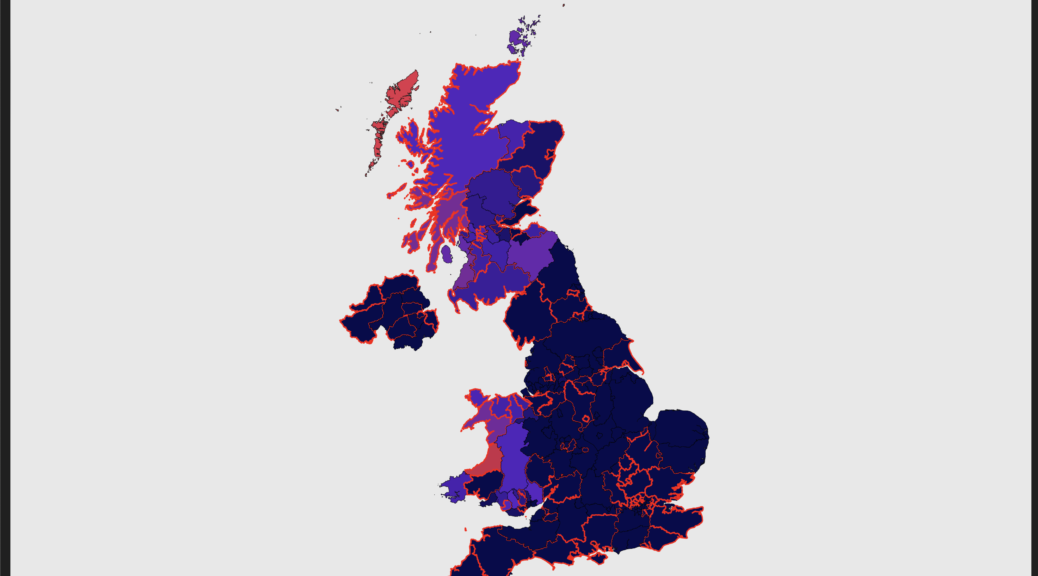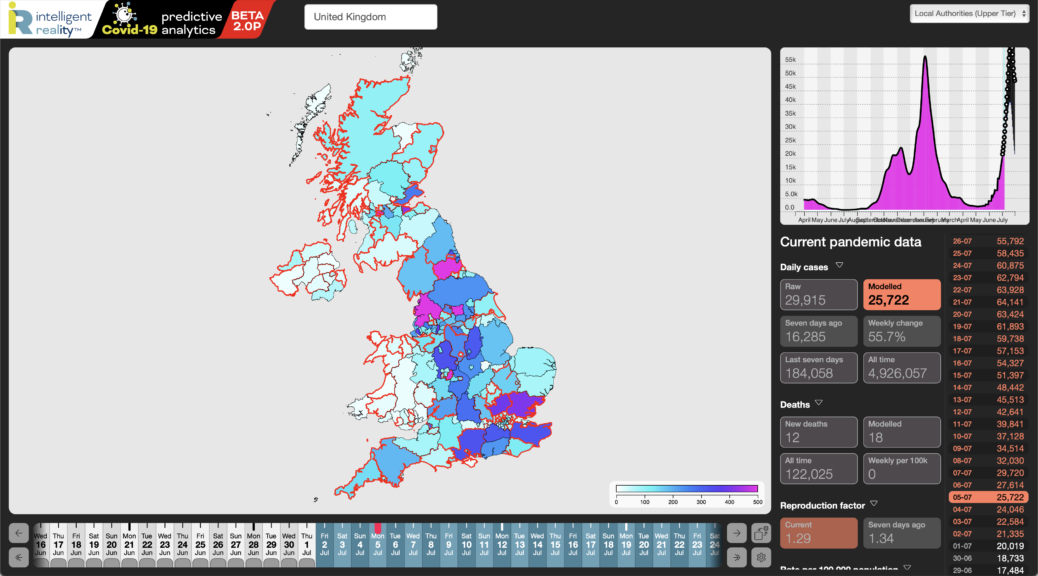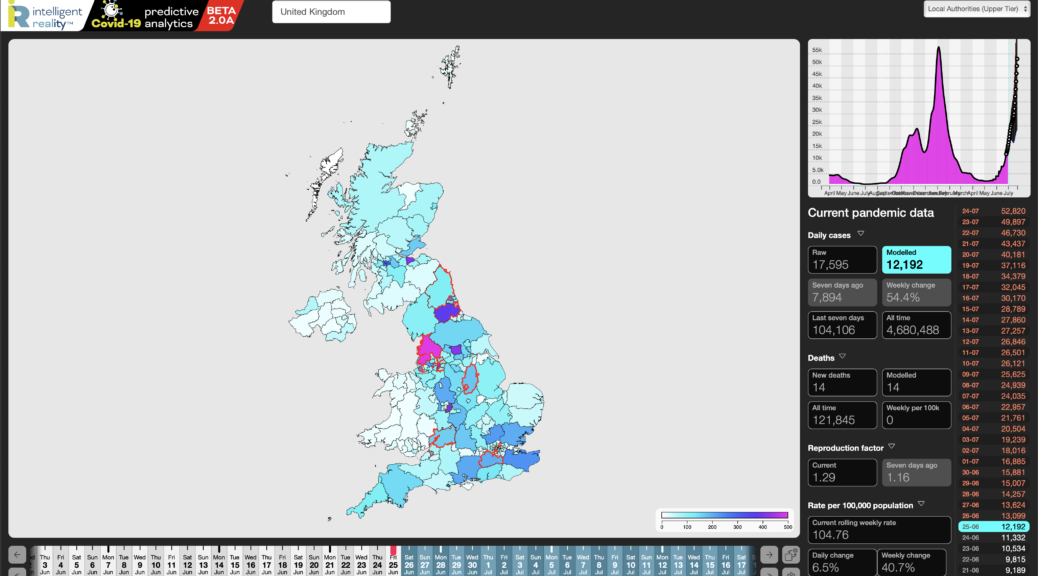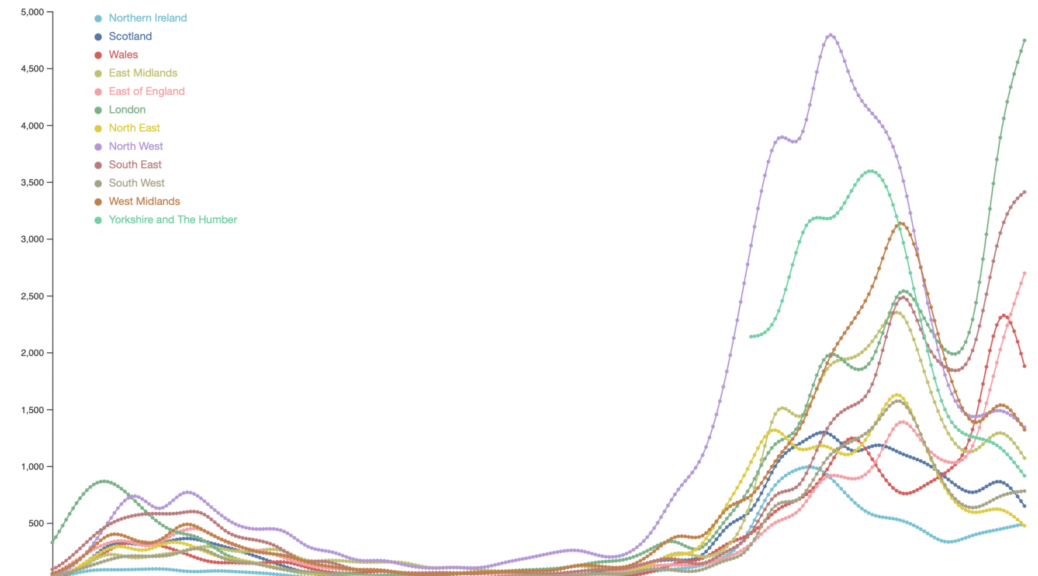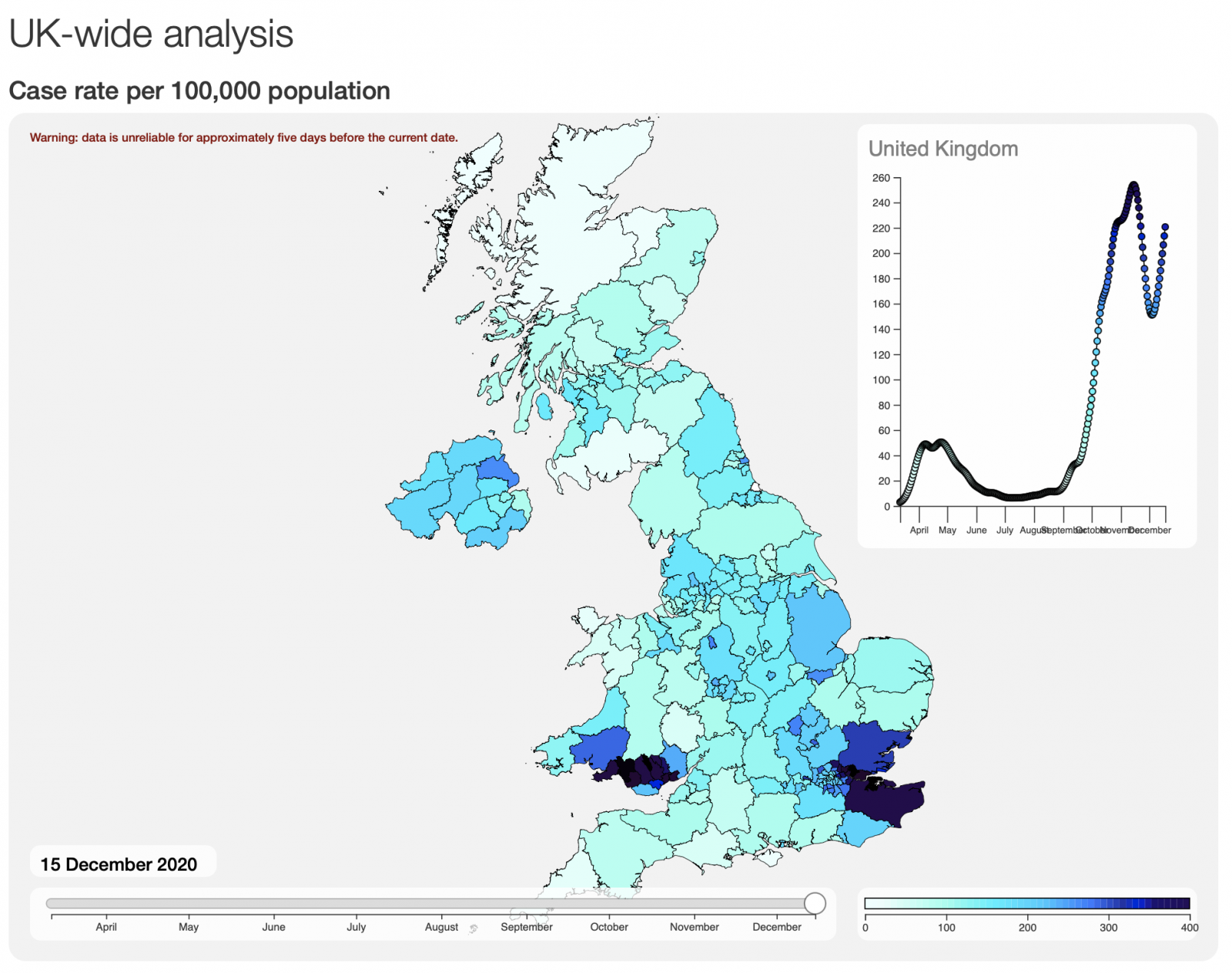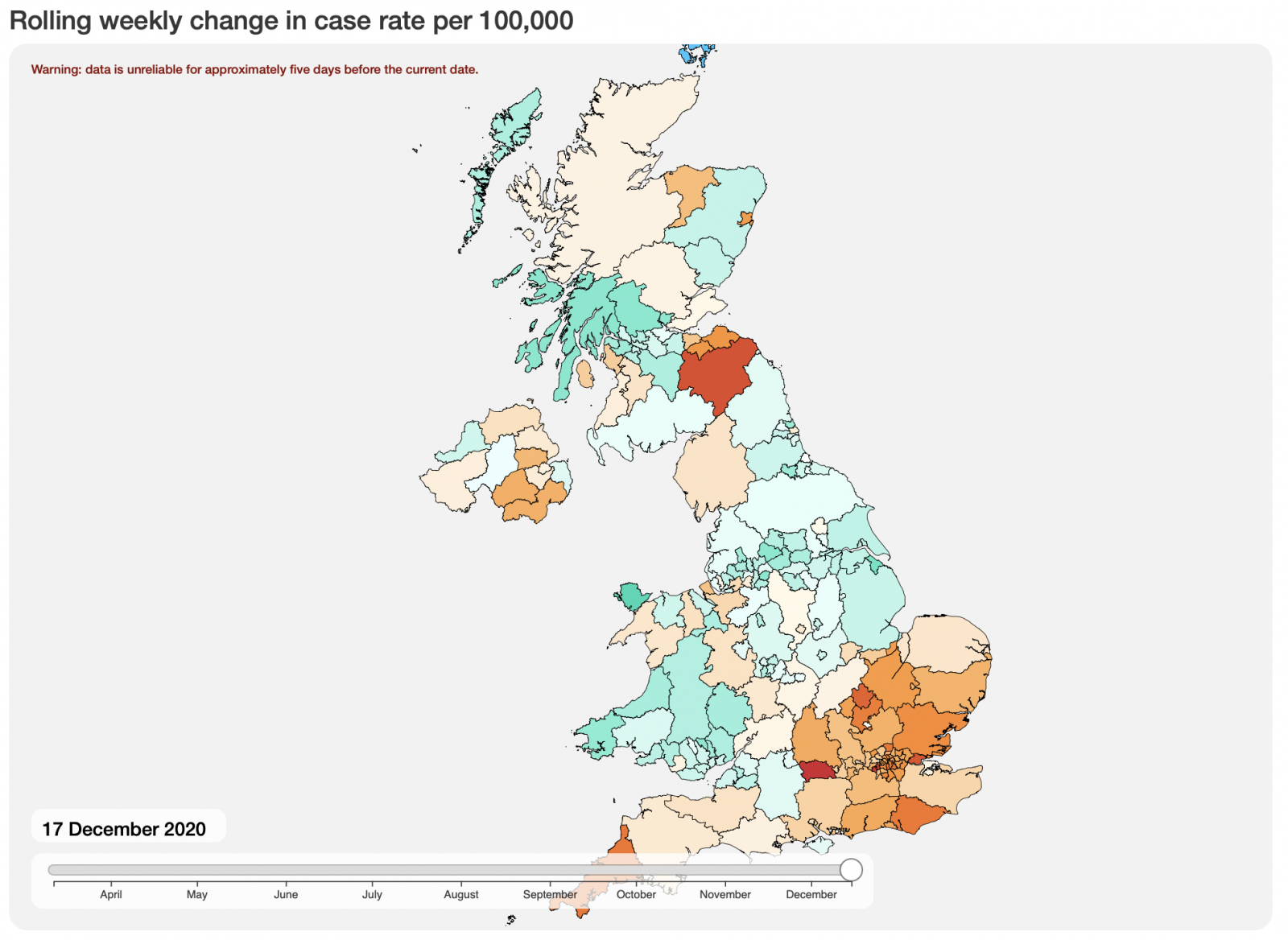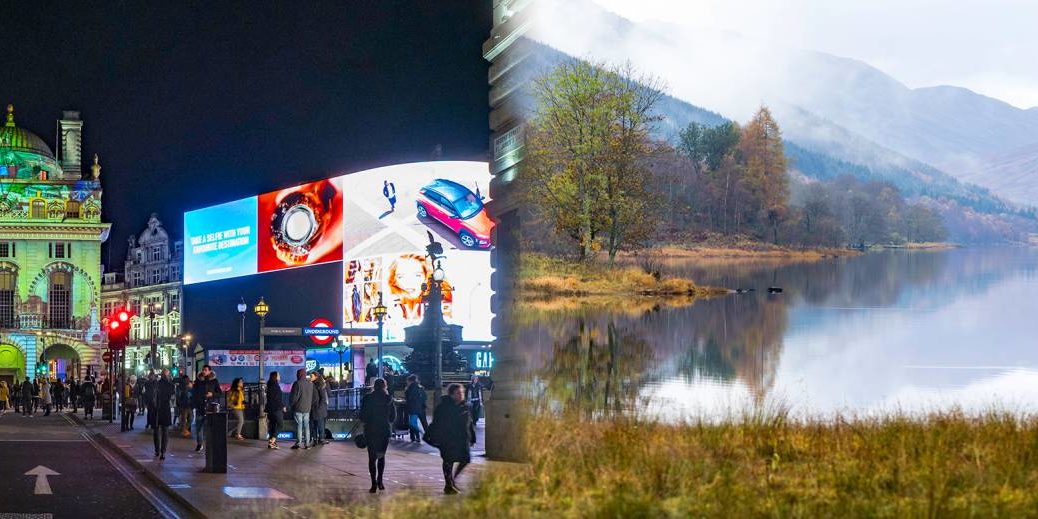The UK’s ‘Prime Minister’ stood up in Parliament today and stated that “Provided the current encouraging trends in the data continue“, Covid-19 restrictions in England would be lifted by the end of the month. At Intelligent Reality, we’re not entirely sure to which data he refers – possibly those from his home dimension? In looking at the published official data, we’re coming to rather different conclusions.
Tag Archives: Scotland
Never Argue with an AI
I owe our system an apology. After it started forecasting a downturn in Covid-19 cases for Scotland, I was dubious, suggesting that because it didn’t ‘know’ about the combination of the final Euro2020 matches or the relaxing of restrictions at a time of rising case numbers, it was being overly optimistic. I was wrong. I owe it the computational equivalent of a beer or two.
From about 17 June, it was forecasting a peak in case numbers for Scotland on or around 5 July, even if it was short on actual case numbers. Since 22 June though, it’s been spot on in both curve and case numbers. The image is of our case number model, plus our current forecast, overlaid with our forecast from 22 June. Basically, it nailed it. The lesson is not to argue with a system that uses more variables than I can count without taking my socks off.
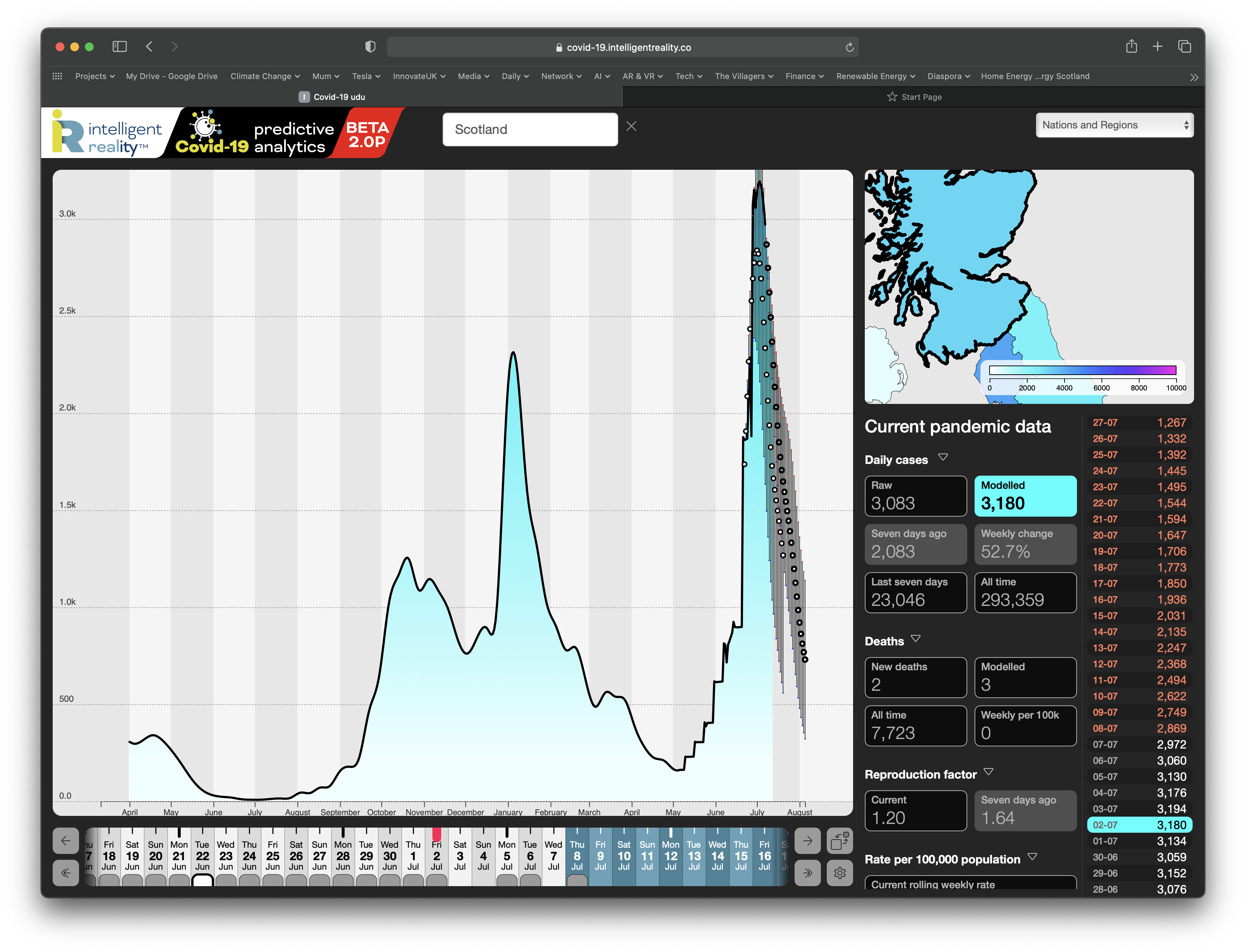
Third Wave Rising
We’ve already shown that our forecasting system has been effective in providing advance warning of the current Third (or Fourth, depending on how you’re counting) wave of Covid-19 cases. With that wave now fully established, we’re looking again at our forecasts, the core data and our dynamic analyses of the pandemic, especially given the latest UK government policy.
With the UK’s rolling weekly case rate now at 238/100k population, up 60% on a week ago, and 40% of the way to the January national peak, we are not reassured. Looking at the behaviour of Chris Whitty’s eyebrows during government briefings, we suspect that neither is he. The current wave is so far unevenly distributed, with urban centres showing the biggest rises, in many cases well above the January peak with, as previously noted, an apparent strong association with those areas most engaged in the Euro 2020 competition. Given little restriction on movement, we believe that these centres of infection are in the process of seeding a ripple of infection across the rest of the country. Continue reading Third Wave Rising
The Impact of G7 and Euro 2020
We’ve now moved from forecast to reality: the UK (and others) are in the throes of a new wave of infections, driven by the Delta variant of the Covid-19 virus. In the UK this has almost certainly been facilitated by both the general relaxation in lockdown and by events such as the G7 Summit and the Euro 2020 competition.
We have now introduced an alert system, which looks for outliers against the current trend in case numbers and pandemic force – this shows that cases and pandemic force spiked in Cornwall following G7 and, as of now, Glasgow (Hampden) just misses out on triggering our alert system and Brent (Wembley) and Edinburgh (the other major source of travelling Scotland fans) both now make our alert list (the red outlined local authorities in the header image). Continue reading The Impact of G7 and Euro 2020
Here We Go. Again.
Throughout the pandemic, we’ve watched UK government Covid-19 policy-making as it appears to follow a drunkard’s walk between, on the one hand, an inherent laziness of response and a politically-influenced disinclination to act and, on the other, an attempt to claim some sort of causal relationship with the scientific and real world advice that they’re being given. The core mantra apparently is to do nothing until it’s too late, then blame any combination of scientists, the wider population and random acts of nature for the outcome.
Some parts of the UK are seeing increasing daily case numbers (first image) and a continuing increase in the rolling live case rate (the second image shows weekly case rate calculated per 100,000 population). 1
From Smart Cities to Rural Communities
I spend much of my time working on various Smart City programmes: anything from modelling need and opportunity to designing architectures for the fusion of large and diverse data sets with live sensor and device data (IoT) and the analytics needed to make the results coherent, timely and relevant. I also live in a very small community, where I was founder of a community company whose efforts have led to our little corner of the Scottish Highlands being in the top 1% of global broadband connectivity. We’re now starting to use that infrastructure to create opportunities for new services and means of service delivery, applying the principles of Smart City programmes to the needs of rural and remote communities, based on the tripod of providing the tools (in the form of the infrastructure), helping people acquire appropriate skills and then nurturing the ideas that then emerge.
The Power of Spontaneity…
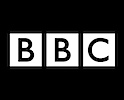 I’m not entirely displeased to announce that Two Worlds is a winner of the 2008 BBC Innovation Labs competition. This is the BBC’s now annual round of looking to the outside world to solicit new technology and service ideas that will help it fulfill its multiple media brief, to engage more effectively with its audiences and to extend the reach of that engagement into a wider demographic. Or something like that. Continue reading The Power of Spontaneity…
I’m not entirely displeased to announce that Two Worlds is a winner of the 2008 BBC Innovation Labs competition. This is the BBC’s now annual round of looking to the outside world to solicit new technology and service ideas that will help it fulfill its multiple media brief, to engage more effectively with its audiences and to extend the reach of that engagement into a wider demographic. Or something like that. Continue reading The Power of Spontaneity…

